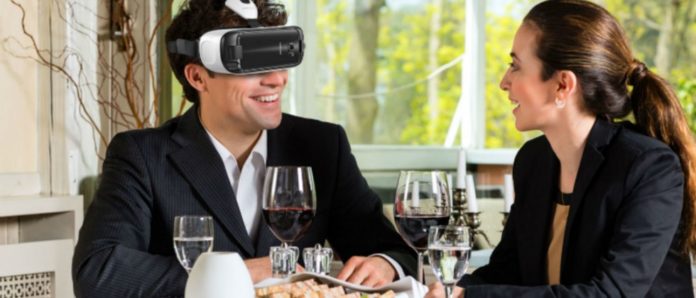We know a lot about how virtual reality can motivate us to move, but there’s growing evidence showing it’s an important tool in diet and weight loss. There are a few studies that highlight how VR can help us control our portion sizes. Our food cravings either help or hurt our ideal body type. How we see ourselves in the virtual world plays a major role in that perception. In essence, developers can help improve our physical development through usage of the avatar.
That’s good news for Fitness VR, which focuses specifically on growing muscle and toning up with a purpose. If you’re looking to control portion sizes, and enjoy a wider variety of healthier foods, VR may be one of several tools you will use in the coming years.
VR and Portion Sizes
The first important benefit of using VR for weight loss is to control portion sizes and cravings, two important factors in losing weight and keeping it off. Researchers wanted to know if patients who suffered from anorexia or bulimia would elicit the same kinds of cravings and anxieties for real foods as they would for photographs or VR representations. VR and real food representations elicited near-identical responses.
This is powerful because it helps us understand how virtual representations of food might play a role in our consumption. In fact, studies show that virtual sessions with a counselor (along with the use of prepackaged foods) also help us control portions sizes and maintain weight better than face to face sessions.
We can use VR as a method to scan where our eyes go when we look for food at the grocery store. In one example, a patient with diabetes can help signal to marketers and retailers where and how to place healthier foods to increase consumption.
Together, these studies point to VR as a powerful tool for weight management. If we can understand which foods create anxiety and cravings within us, we can figure out what to avoid. We can also teach ourselves to seek out healthier foods. Virtual trips to the market can teach kids where to find healthier foods, and how to read labels.
Modeling the Body
We know that goal-oriented design leads to better fitness outcomes. If our avatar changes to reflect weight loss and fitness goals, our opinion of ourselves can evolve. Even if we are couch potatoes, seeing our idealized body type in VR can help us self-actualize. It’s true that so much of fitness is a mental game.
There are two important studies that give us some insight into the power of VR for our physical health. The first points to improving our consumption of healthier foods. Kids are naturally attracted to video games because they are so interactive, so researchers wanted to see if they could be used as a system to educate kids on proper diets. The study found that pets created in VR could encourage children to seek out healthier foods. This very much taps into that goal-oriented mentality behind VR fitness.
In another study, patients were assigned an avatar in a virtual world that was more like their idealized body type. Using this body type, researchers were able to encourage and sustain exercise and weight loss in subjects.
Some Thoughts and Observations
What’s important about this research is that none of it points to the physical aspect of getting up and using VR. In nearly all of these studies, patients were either placed into a virtual world or observing food in a stationary position. With absolutely no physical movement, the science seems to suggest VR can be a powerful tool for managing diet and keeping weight off.
Some tests conducted used sample patients suffering from eating disorders, which shows the power of VR’s mental component. These patients have adverse reactions to real food, yet VR can help control portion sizes and encourage eating properly again.
[youtube https://www.youtube.com/watch?v=DDJCEOtZJ3c&w=560&h=315]
Finally, what stands out to me personally is the power of the brain to adapt. Typically these studies aren’t using the latest in graphical technology. They are using low polygon models of food and the brain is still translating those images into real responses. Our brain can be tricked into thinking food is real even when we know it’s not. That’s huge. It makes me wonder how else VR can be used to hack the brain. If you believe the hype at Project Nourished, VR might allow us to enjoy the most decadent and high-calorie foods using 3D printed edibles with extremely low caloric content. Sounds a bit like something out of Demolition Man, but our senses are tricked so easily.


